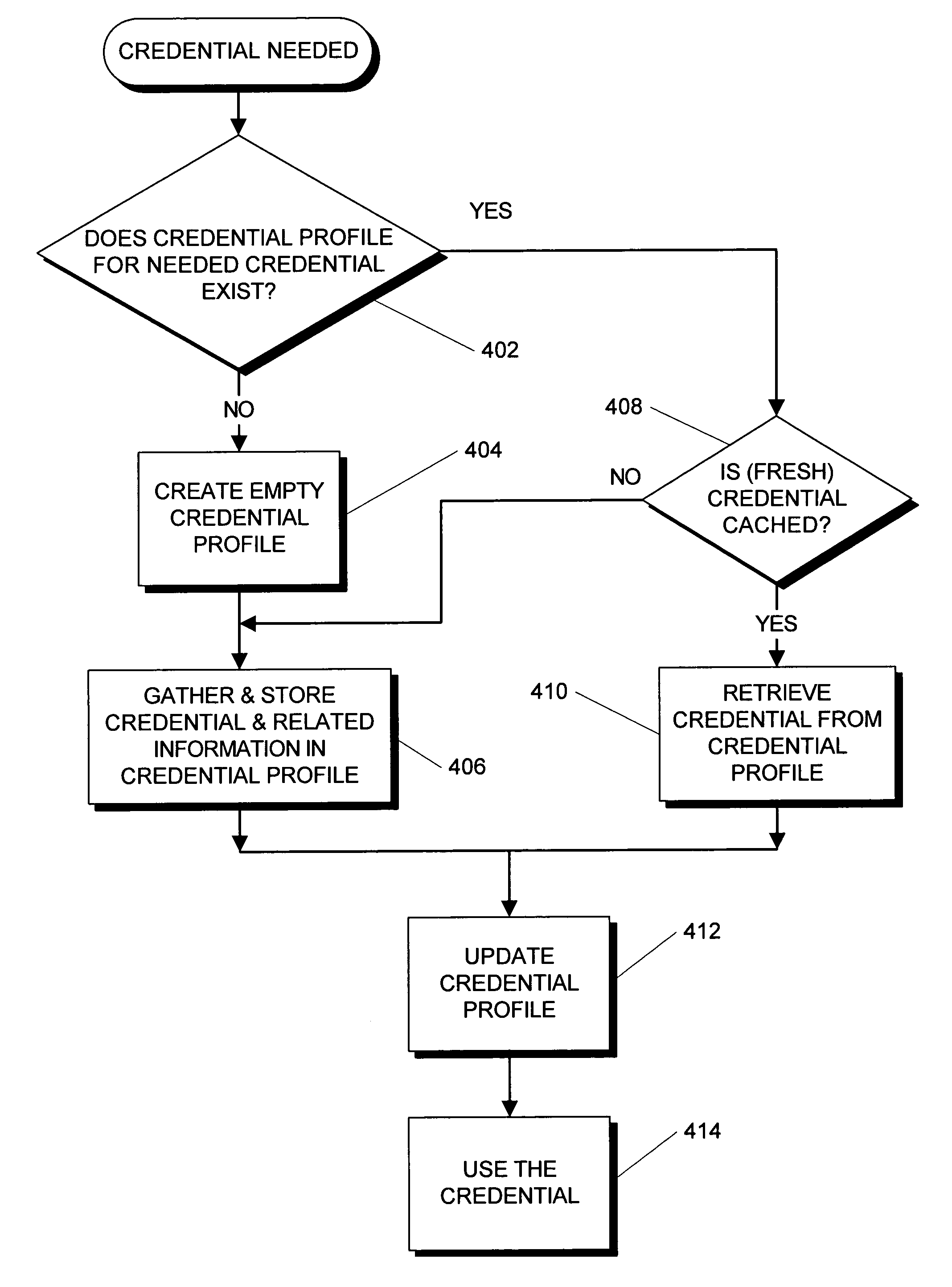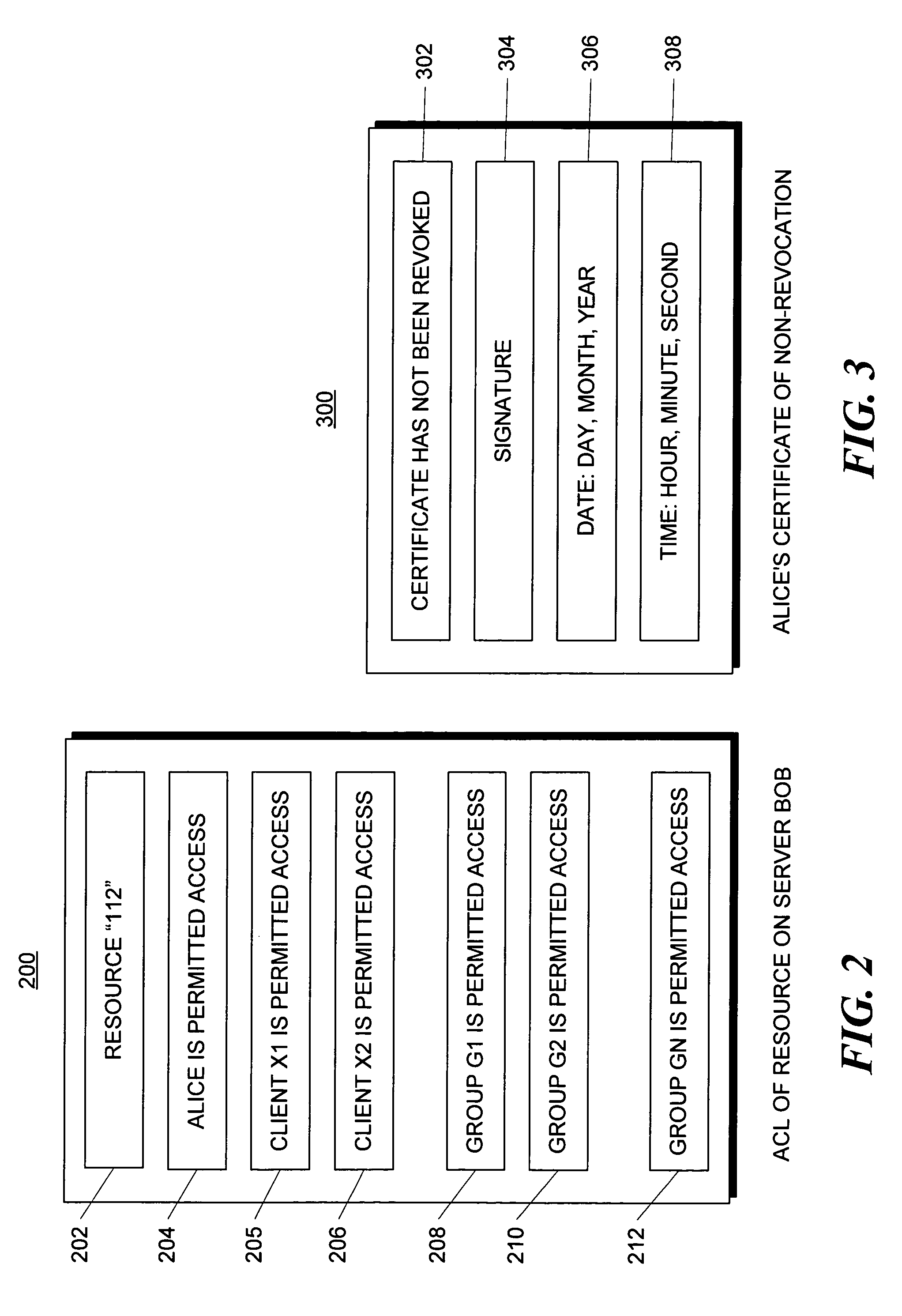Method ans system for pro-active credential refreshing
a credential and pro-active technology, applied in the field of authorizing access to resources, can solve the problems of infrequent distribution of certificates, inability to issue an up-to-date certificate for each transaction, and inability to maintain the credentials required for access to resources
- Summary
- Abstract
- Description
- Claims
- Application Information
AI Technical Summary
Benefits of technology
Problems solved by technology
Method used
Image
Examples
an embodiment
of the Invention
[0045]As shown in FIG. 1, a computer network 100 includes a network “cloud”102 that provides the interconnection for devices on the network. The network cloud 102 may represent a simple local area network, for example, an Ethernet on one floor of a building. At the other extreme, it may represent the entire worldwide Internet. The network cloud 102 may contain transmission lines, repeaters, routers, network backbones, network interconnect points, etc., depending upon the extent of the network which it represents.
[0046]A client can be any device capable of sending messages over the network and is generally thought of as an individual workstation, a desk-top computer, a mini-computer accessed by a terminal, a personal digital assistant (PDA), an embedded device, or some other relatively simple computer. A client is often a computer operated by one person, although an independently operating computer or a program operating without human intervention can also be a client...
PUM
 Login to View More
Login to View More Abstract
Description
Claims
Application Information
 Login to View More
Login to View More - R&D
- Intellectual Property
- Life Sciences
- Materials
- Tech Scout
- Unparalleled Data Quality
- Higher Quality Content
- 60% Fewer Hallucinations
Browse by: Latest US Patents, China's latest patents, Technical Efficacy Thesaurus, Application Domain, Technology Topic, Popular Technical Reports.
© 2025 PatSnap. All rights reserved.Legal|Privacy policy|Modern Slavery Act Transparency Statement|Sitemap|About US| Contact US: help@patsnap.com



